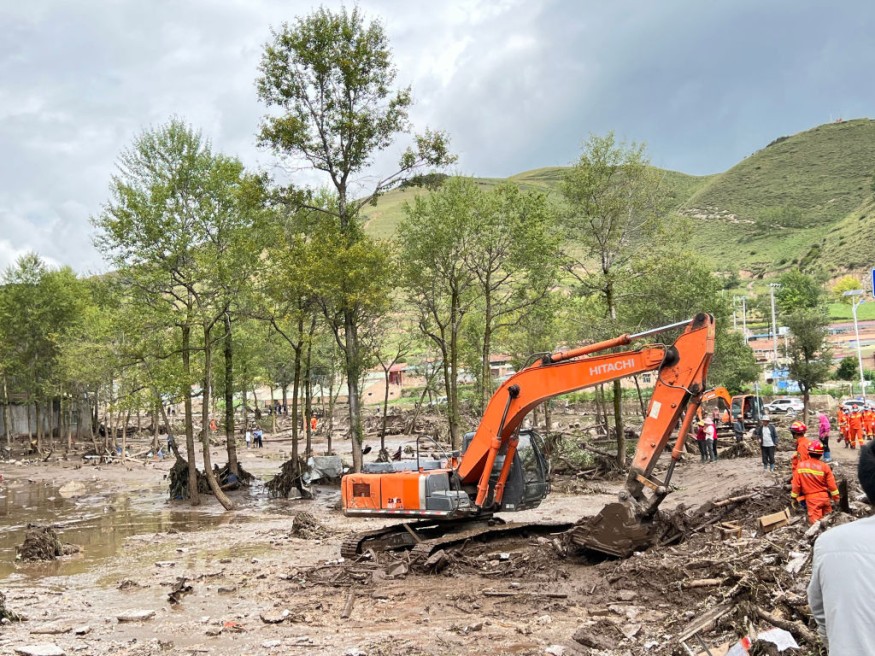Following severe floods in western China, at least 16 people have died. Following late-night floods and heavy rain that caused landslides and converted a hilly area in China into a deadly flash flood, 18 individuals are still unaccounted for.

Flash Flood
Flooding brought on by significant or severe rainfall over a brief period-typically less than six hours-is referred to as a flash flood. Flash floods are often characterized by violent streams that tear across riverbeds, city streets, or mountain gorges following intense rainfall, destroying everything in their path. They might happen shortly after a heavy downpour or after a few hours. They can also occur when there hasn't been any precipitation, as when a levee or dam fails or when ice or debris jams suddenly release water.
Situation Update
According to reports from Chinese state media on Thursday, severe floods caused by heavy rains killed 16 people and left at least 18 more missing in the western Chinese province of Qinghai.
Late on Wednesday night, torrential downpours that had suddenly started over a hilly section of Qinghai produced landslides and redirected rivers, causing flash floods in a populated area. According to the state broadcaster CCTV, the initial impact affected more than 6,000 people in six villages.
Emergency personnel referred to the swift flooding as a "mountain torrent," The Associated Press reported. Mountain torrents are caused when water flowing down transforms gullies or streams into rushing rivers, sometimes taking people by surprise. They happen after an intense rainstorm in higher elevations.
Damages Everywhere

Overturned vehicles, uprooted trees, and partially washed-away highways covered in debris could all be seen in a video of the aftermath posted online, according to the AP.
According to Reuters, the local administration has dispatched a rescue team of 2,000 personnel and 160 vehicles for disaster assistance.
By early Thursday afternoon, 18 of the 36 persons who had been reported missing by rescuers had been located, according to a CCTV online update.
Temperatures will remain in the 70s to low 80s for the remainder of the week. Datong County, the area most affected by the flooding in Qinghai Province, should anticipate further showers and thunderstorms.
This summer has been marked by harsh weather for China, with the nation dealing with unprecedented floods, heat waves, and droughts.
Tens of thousands of people were displaced by a historic flood that devastated the provinces of Guangdong, Fujian, and Jiangxi in central and southern China at the end of June due to river overflows.
Weather Status
The biggest heat wave in six decades is burning most of central China, with temperatures rising by 15 to 25 degrees Fahrenheit. This occurred only a month after Shanghai, China's most populous metropolis, had a deadly heat wave that caused temperatures to exceed 100 degrees.
According to the China Meteorological Administration, Al Jazeera said, more than a third of the nation's meteorological stations have recorded excessive heat this summer. A minimum of 262 stations achieved or beat prior marks.
Immediate Relief Response
According to Al Jazeera, the Ministry of Finance said on Thursday that they had given local governments 420 million yuan ($61.83 million) in emergency funding to provide food and drought relief as the nation continues to deal with terrible weather.
Related Article : Exposure to Major Disasters Can Cause Long-Term Mental Health Problems
For more climate and weather updates, don't forget to follow Nature World News!
© 2026 NatureWorldNews.com All rights reserved. Do not reproduce without permission.





